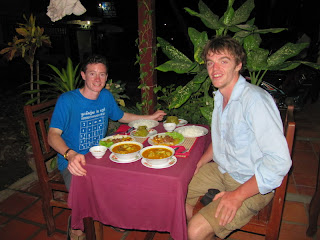Following Jack´s last post we have now come to the conclusion that it should be up the families to decide what is the best method for treating their water, and our job would be to provide awareness and education on the possible ways which they could do that. The way which we approach the community is extremely important, and this is probably going to have a direct impact on the outcome of our project.
One branch of the (current) plan is to carry out a Health Workshop with communities in/around Poipet. This would be done by the CHO Water and Sanitation team, so it would continue once we leave Cambodia. CHO currently implement wells and/or ponds at nearby villages, so we thought that running a Heath workshop would be the next step to provide a better quality of life for the families. We then decided to have a meeting with Saret, the water and sanitation coordinator, to find the best way to approach communities, and to stablish a workshop style that the team strongly believes on and will be happy and feel comfortable to carry it out after we leave.
Yesterday we met with Saret and Lang to discuss their Water and Sanitation projects, and found out that they already do workshops with the communities after ponds/ wells have been installed, which is a jump forward on our plan. They normally gather 1-2 people per family to attend the workshop, which is carried out at the village, they use pictures to illustrate what is being discussed, as most people are illiterate. The goal of this workshop is to provide health education (washing your hands, basic sanitary rules, to clean cuts...) and to promote the practice of boiling water. We thought that this fit in perfectly with water treatment education materials, where we can also promote ceramic filters, so we would only be adding on a section to CHOs existing workshop.
The first problem that we were faced with was the relatively high price of ceramic pots. Families struggle to afford the $2,50 needed (contributed by 30 families) to construct a subsidized well ($1,500), hence $12 just seemed out of their reach. However, Leng and Saret did agree that the only way ceramic pots could be successfully implemented, and properly maintained, would be if their were bought by the families themselves and not given by a NGO.
Micro-loans
In order to go around the problem of the high cost of ceramic pots Chommo offered to introduce a microloan skim to families willing to buy the ceramic pots. They would pay $4 per month, for 3 months. Since the water and sanitation team already does frequent well/pond follow-ups at the communities for 2-3 years, they could also collect the payment, as well as ensure the filters are used correctly.
Approaching the communities
We think that the most effective way of raising awareness is to make families realise for themselves that some of their illnesses could be heavily related to their drinking water source. This realisation process should be done through a group discussion section rather than by us "teaching them". The discussion would involve first the location of the family water source and possible contaminates of each. Then we would explain how these contaminants could lead to diseases and ask if these diseases do occur. If that is the case, we would then move on to the 3 options which we think are are viable in this scenario: boiling, chemical tables or ceramic pots.
The next stage would be to find out how much the families know about each method, whether they already use any and what is their opinion on each of them. From there we can add on to their knowledge by providing the pros and cons of each method, the cost of each and where to find it. If we are able to get interest from the group on ceramic pots we would then let them sample the water (from our new) give a quick demonstration on how to clean it and explain the micro-loan skim.
Current steps...
Today we had a meeting with the whole water and sanitation team (which includes agriculture). We realised that these workshops do not occur as often as we hoped, which means that we won`t be able to see many of them, thus we will not be able to improve from our experience as much as we hoped for. So the way we decided to overcome this problem is by running "sample" workshops with families which CHO has previously worked with. Tomorrow we will visit 2 of these families who haven't attended this workshops in the past. We hope that from these meetings we will have a better idea on what is the most appropriate way of approaching and educating the communities.
The issue now is, who should get the micro loans, village vendors or the families directly? Would the families be able to afford replacements to maintain the filters? Could they travel 20k to Poipet to reach the local shop? And which villages should we go to?
Evelyn

























